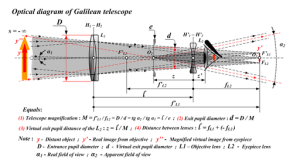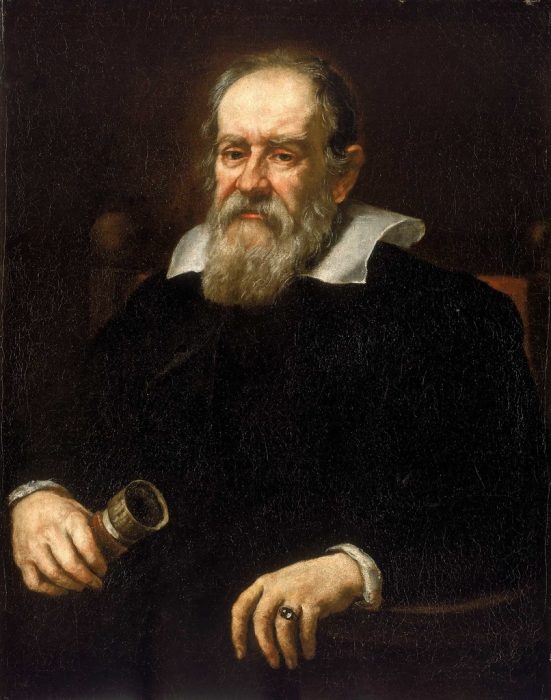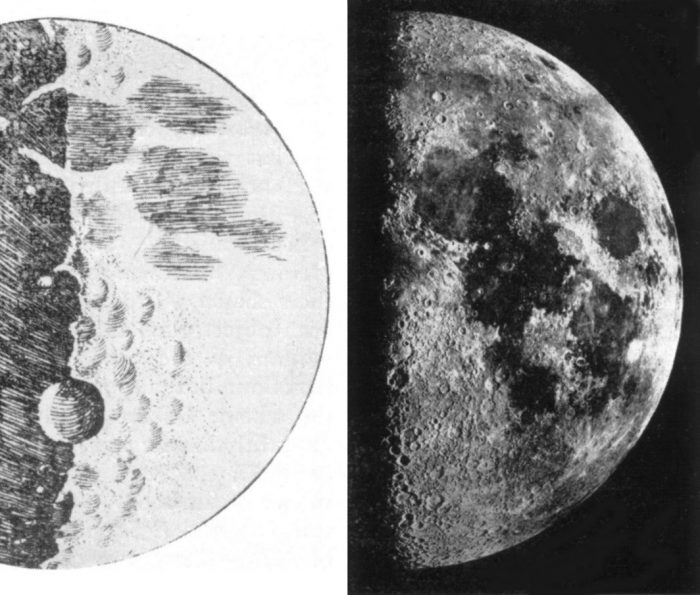Renaissance/Enlightenment (1600’s-1800’s)
15
Casey Mccarroll
Introduction
The 17th century was the age of the Scientific Revolution. This time period brought about new scientific discoveries and unearthed questions that had never been asked before. This shift in thought, knowledge, and beliefs affected not only science, but technology and society. The advances made during this time period produced a cultural transformation on the basis of facts and tangible proof rather than the previous teachings, religious entities, and natural philosophers (Gil, 2016). Precise tools, such as the telescope, were used to obtain exact measurements through observation and experimentation in order to prove discoveries that would change the public’s way of thinking about the universe.
Early invention
The telescope was originally invented in October of 1608, by three spectacle makers in the Netherlands. Hans Lippershey was the first to apply for a patent for his instrument that was made for “seeing things far away as if they were nearby” (Lemons, 2017, p. 66) The invention consisted of concave and convex lenses that were located in a tube, as seen in the diagram in Figure 1.

The combination of these two lenses magnified objects by three to four times. The patent was reviewed by the national government of the Netherlands which deemed the device to be too easy to copy and the patent was rejected. Several weeks later, Jacob Metius, another Dutch instrument-maker, applied for a patent of a very similar instrument to that of Lippershey. Both spectacle makers were awarded for their designs, but neither obtained the patent (Van Helden, 1977).
Galileo Galilei

News of this invention reached Galileo Galilei, an Italian physicist and astronomer shown in Figure 2, in May of 1609. Galileo initially made a telescope that magnified objects by three times their actual size. He improved upon his design and presented an eight-powered telescope to the Venetian Senate in August of 1609. Galileo received praise for his instrument and was rewarded with a raise and permanent tenure at the University of Padua. The original use of the telescope was for observations of the Earth’s surface. Galileo was the first to point his model of the telescope to the sky. He was a skilled instrument maker and his telescopes were known for their high quality. The observations he made about the cosmos in The Sidereal Messenger would cause issues not only for Galileo, but also for future astronomers. The invention of the telescope caused controversy between religious teachings and science like no other invention had before (Gingerich, 2011).
Contradicting ideas
“All other heavenly bodies moved in complicated patterns around the Earth.”The telescope allowed astronomers to observe nature in more detail than ever before. These observations brought about new ideas that contradicted traditional thinking and religious theories. Greek astronomer, Ptolomy, theorized that the Earth was the center of the universe and was motionless. Religious entities also believed this to be true and taught that “all other heavenly bodies moved in complicated patterns around the Earth.” This theory was widely accepted by the public for more than 1,000 years. Nicolaus Copernicus, a Polish astronomer, was the first man to fully challenge the theories of Ptolmy. Between 1507 and 1515 Copernicus created the principles of heliocentric, or Sun-centered, astronomy. He made all of the observations for his principles with the naked eye. Even without the tools to prove his theory, Copernicus concluded that the Earth, and every other planet, revolved around the Sun. He also concluded that the Earth rotates on an axis. The initial response to Copernicus’ principles was somewhat ambivalent but, the principles were generally rejected by religious organizations. However, his theory was discussed in Lutheran and Catholic universities. Mathematically, the Copernican system was easier than Ptolemy’s to use, as it incorporated more circles rather than elliptical shapes. This system, in turn, resulted in computations of planetary positions using the Copernican system. As a practicing and loyal Catholic, Copernicus followed proper procedures that were required to secure formal permission from the Church to publish his book, De Revolutionibus (On the Revolutions), describing his controversial theories. At this time, the Catholic Church was under scrutiny for its spiritual and political authority in Europe and the Church chose not to respond to Copernicus’ request. The Catholic Church believed that if these theories remained in argument, they would not threaten the Church’s ultimate authority. This silence was forced to be broken when, 50 years later, the invention of the telescope came about (Rabin, 2004).
Evidence Defending the Copernican theory

Fifty years after Copernicus died, Galileo Galilei attempted to prove the Copernican system of heliocentric astronomy. Galileo resolved technical problems with his initial designs of his telescope and created one with the magnifying power of 20 times. With this improved telescope, Galileo made observations of which include craters and mountains of the Moon, the phases of Venus, sunspot and solar rotation, and the Moons of Jupiter. As Galileo observed the Moon, he saw that it was not a perfectly smooth sphere as Greek astronomers had previously determined. He observed mountains and craters, shown in Figure 3, that indicated the Moon was more similar to Earth than anyone had ever thought. Galileo also used his telescope to observe dark spots on the sun that would change and move across the surface. This indicated that the sun in fact rotates on an axis, which also made Copernicus’ theory more reliable as it state that the Earth rotates about a fixed axis. Through the lens of his telescope, Galileo discovered four moons that orbit Jupiter. Galileo saw four bright lights that followed Jupiter and appeared to orbit around the planet. Galileo concluded that Earth could not be the only center of motion in the entire Universe. These remarkable findings, among many others, did not necessarily prove Copernicus’ principles but they did validate the theories that he presented while illustrating inconsistencies with the Ptolemaic system. In 1624, Galileo compiled his findings in a book named Dialogo sopra i due massimi sistemi del mondo, which translates to the Dialogue Concerning the Two Chief World Systems. This book, comparing the two systems, brought about controversy between Galileo and religious organizations (King, 2003).
Conclusion
As Galileo’s discoveries spread across Europe, he gained praise from some scientists and academics along with ridicule from skeptics. With the new findings defending the Copernican model becoming more popular the Church had no choice but to intervene. The Church declared that the idea of heliocentricity was “philosophically false and at least an erroneous belief.” Copernicus’ book, De Revolutionibus, or On the Revolutions of the Heavenly Spheres in English, was banned by the Church. Galileo was also advised to stop teaching and defending Copernicus’ theories by Cardinal Robert Bellarmine. In 1624, Galileo went against the Cardinals advice and wrote the Dialogue Concerning the Two Chief World Systems which some believe was a personal attack on the Pope and the Church. Galileo was summoned by the Roman Inquisition and faced trial for his “unorthodox” teachings. He was charged with disobedience of Bellarmines’ orders and heresy. As he was faced with the threat of torture, Galileo was forced to plead guilty. He was sentenced with house arrest until his death in 1642. Galileo continued his experiments while under house arrest and also wrote another book, The Two New Sciences. 350 years after Galileo’s death, in 1992, Pope John Paul II officially declared him innocent but the Church has yet to publicly support the Copernican model. Though Galileo paid a price for his findings, they change astronomy, and science as a whole, for the rest of time. His discoveries lead to more inventions than he ever imagined and his theories have held up to new technologies and scientific revelations.
Chapter Questions
- Short Answer: Early telescopes consisted of concave and _________ lenses.
- Short Response: What is the heliocentric theory?
- Short Answer: Who was the Greek astronomer that theorized the Earth was the center of the universe?
References
Gil, P. (2016, May 30). Science in the 17th century: From Europe to St Andrews. Retrieved from http://mathshistory.st-andrews.ac.uk/HistTopics/Science_17C.html.
Gingerich, O. (2011). Galileo, the impact of the telescope, and the birth of modern Astronomy1. Proceedings of the American Philosophical Society, 155(2), 134-141. Retrieved from http://libproxy.clemson.edu/login?url=https://search.proquest.com/docview/896739203?accountid=6167
King, Henry C., and Sir Harold Spencer Jones. The History of the Telescope. Mineola, New York: Dover Publications, Inc., 2003. Web. Nov 14, 2019.
Lemons, D. S. (2017). Drawing Physics: 2,600 Years of Discovery From Thales to Higgs. MIT Press.
MSFC, Sandra May-. “NASA – Telescope History.” Web. Nov 14, 2019 <https://www.nasa.gov/audience/forstudents/9-12/features/telescope_feature_912.html>.
Rabin S. Nicolaus Copernicus. In: Zalta EN, ed. The stanford encyclopedia of philosophy. Fall 2019 ed. Metaphysics Research Lab, Stanford University; 2004. https://plato.stanford.edu/archives/fall2019/entries/copernicus/. Accessed Nov 27, 2019.
Van Helden, Albert. “The Invention of the Telescope.” Transactions of the American Philosophical Society, vol. 67, no. 4, 1977, pp. 1–67. JSTOR, www.jstor.org/stable/1006276.
Figures
“Optical diagram of Galilean telescope.” by Tamasflex is licensed under CC BY-SA 3.0
“Portrait of Galileo Galilei” by Justus Susterman, National Maritime Museum is in the Public Domain
“Galileos Moon” by Adrignola is in the Public Domain
